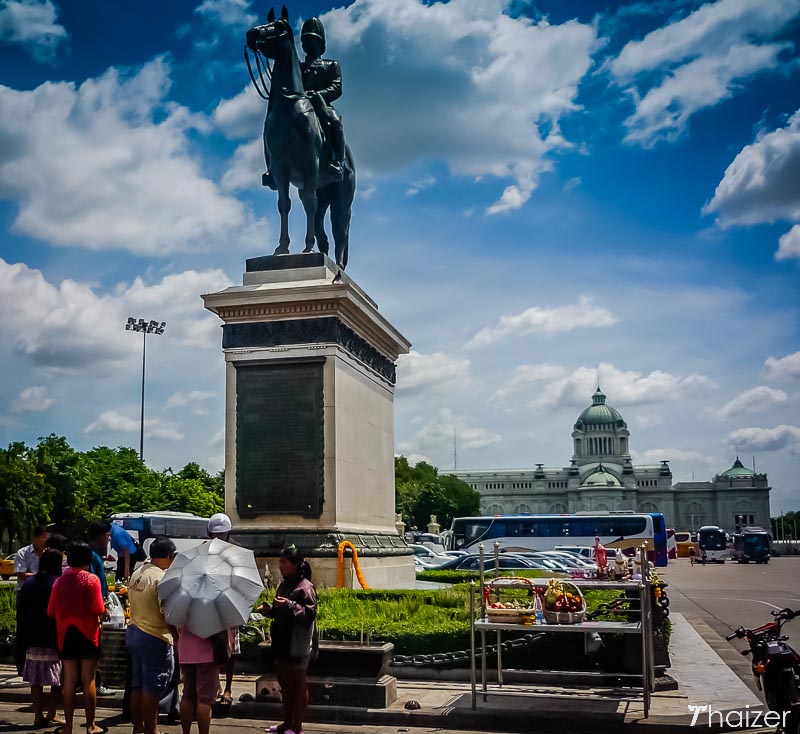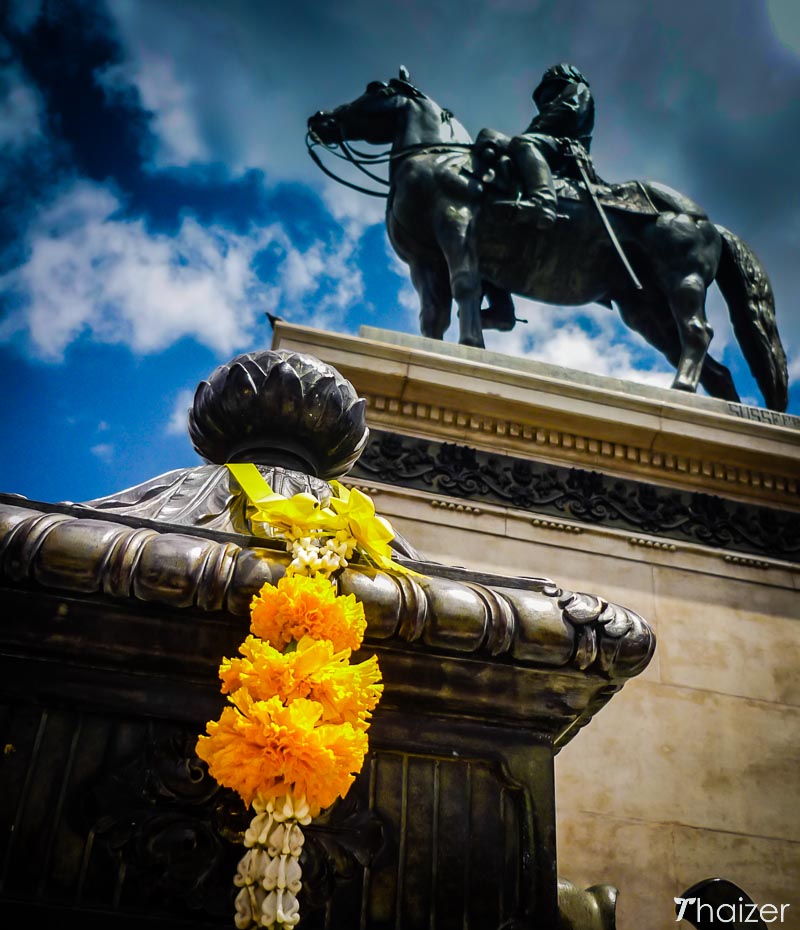One of the most revered figures in Thailand’s history, King Chulalongkorn the Great (Rama V) is regarded as a ‘royal father’ of the nation. His portrait, alongside that of the current king, can often be seen hanging up inside homes and business premises. The best-known tribute to King Rama V (born 1853 died 1910) is the equestrian statue located on the Royal Plaza in front of the Ananta Samakhom Throne Hall in Bangkok.

King Rama V (born 1853 died 1910) was the first Thai monarch to visit Europe and he established the Dusit area of Bangkok as a royal district based on the leafy boulevards and palaces he’d seen on his travels. The statue of the king is located in this same royal district and was cast by a French sculpture in Paris and erected in 1908, two years before the king died. The money to pay for the works was raised by the Thai people to show their love and admiration for King Rama V and to mark the 40th anniversary of his coronation. That admiration and respect can still be seen today with Thai people paying daily homage to the statue with flowers and garlands. Tuesday is a particularly popular day for visitors to the statue because King Rama V was born on a Tuesday. For this same reason some visitors to the statue will also wear pink, the colour associated with the king’s birthday.

The equestrian statue of King Chulalongkorn is located in the Dusit area of Bangkok just along from the end of Ratchadamnoen Nok at the crossroads of Si Ayuttha and U-Thong. There are no skytrain or metro stations nearby, but the statue is approximately a 20-minute walk from the Thewes river boat pier (N15). Organised tours to Dusit Palace, Vimanmek Teakwood Palace or Wat Benjamabophit (The Marble Temple) often also include a visit to the equestrian statue.